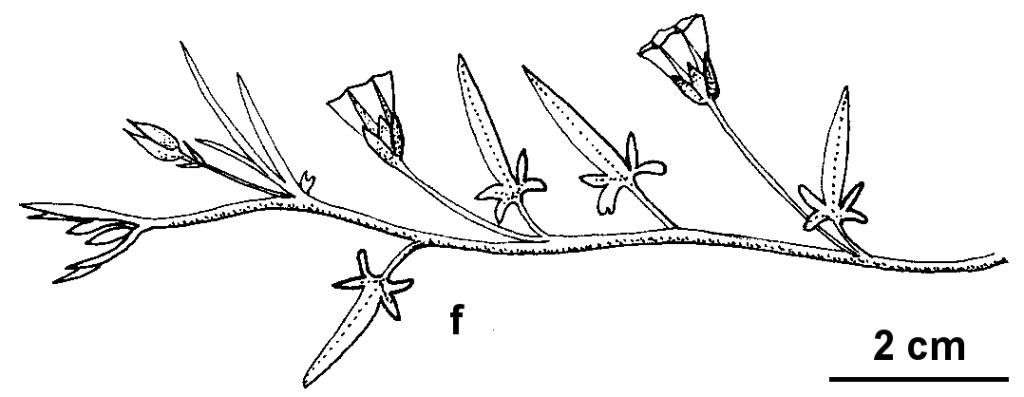Convolvulus erubescens
Sims Pink BindweedPerennial with trailing and twining stems, more or less glabrous to moderately hairy. Mid-stem leaves ovate to oblong-lanceolate or narrow-triangular in outline, 2–5 cm long, 15–27 mm wide, apex acute to rounded or emarginate, base cordate or sagittate, the basal lobes (1 or 2 per side) spreading, to c. 1 cm long, more or less glabrous at least above; petiole 25–35 mm long. Flowers 1–3; peduncles 10–60 mm long; pedicels 5–20 mm long, straight or sinuate in fruit, shorter than peduncles; bracteoles linear to subulate, 1–3 mm long; sepals obovate, oblong or elliptic, 4.5–7 mm long, sparsely to moderately hairy; corolla funnel-shaped, 7–15 mm long, pink or mauve with a greenish throat. Capsule globose to globose-ovoid, 5.5–6.5 mm diam., style-base persistent; seeds finely punctate, bearing numerous small irregular tubercles. Flowers late spring to early autumn.
LoM, MuM, Wim, GleP, Brid, VVP, VRiv, MSB, RobP, MuF, GipP, OtP, WaP, Gold, CVU, GGr, DunT, NIS, EGU, WPro, HSF, HNF, OtR, MonT, VAlp. All states. All native Convolvulus species were included in C. erubescens prior to Johnson's revision (Austrobaileya 6:1-39, 2001). Known with certainty in Victoria only from a recent collection in dry shrubland on limestone geology near Omeo.
Mapped Victorian records other than that from near Omeo derive from specimens of dubious origin or identity that are not held at the National Herbarium of Victoria.
Jeanes, J.A. (1999). Convolvulaceae. In: Walsh, N.G.; Entwisle, T.J., Flora of Victoria Vol. 4, Cornaceae to Asteraceae, pp. 365–375. Inkata Press, Melbourne.
 Spinning
Spinning
